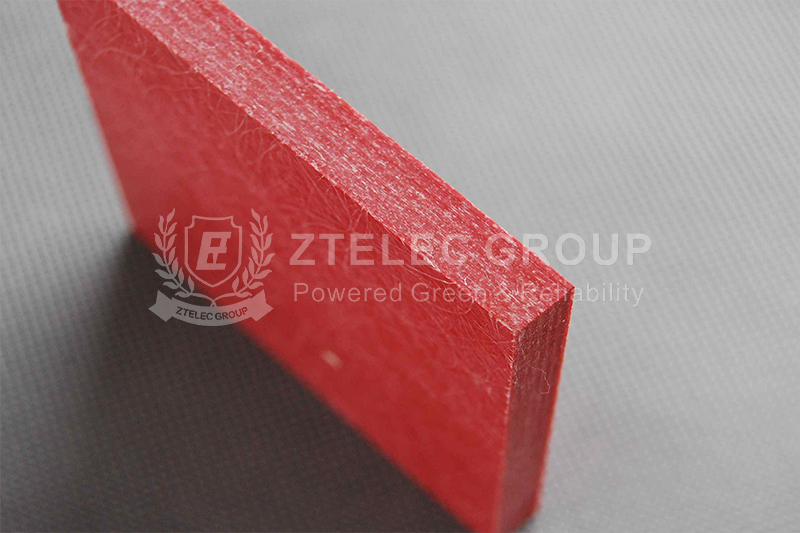GPO-3 sheet, also known as GPO-3 laminate or UPGM-203, is a high-performance insulating material. GPO-3 sheet is made of alkali-free glass fiber felt plate immersed in unsaturated polyester resin paste, and then added the corresponding additives, and then hot pressed to form a hard plate like insulation material.
Color and specifications: GPO-3 sheet is usually white, brown red or other colors, its specifications are varied, common thickness range between 0.8mm and 100mm, size including 914×1828mm, 1220×2440mm and other standard sizes, but also can be customized according to customer needs.
The density of GPO-3 refers to the mass of GPO-3 material per unit volume. It is usually expressed in grams per cubic centimeter (g/cm³). The density of GPO-3 usually ranges from 1.81 to 1.83g/cm³, which varies slightly depending on the production method and the specific formulation.
Density is an important index to measure the physical properties of GPO-3 sheet, which affects the strength, hardness, heat resistance, electrical properties and other aspects of the material. High-density GPO-3 materials generally have better mechanical and electrical properties and are suitable for applications where strength and electrical properties are required. The low-density GPO-3 sheet may show better processability and flexibility in some aspects, and is suitable for occasions where material weight and processing cost are required.

Mechanical properties:
Higher density GPO-3 sheets generally have better mechanical strength, including tensile strength, bending strength, and compression strength. This makes the high-density GPO-3 sheet less likely to deform or break when subjected to external forces.
The density may also affect the hardness and wear resistance of GPO-3 sheets. In general, the higher the density, the higher the hardness and wear resistance.
Electrical performance:
As an insulating material, the electrical properties of GPO-3 sheet are very important. The density has a certain effect on the insulation resistance, dielectric constant, dielectric loss angle tangent and other electrical properties of GPO-3 sheet. Although these properties are mainly affected by the resin matrix and glass fiber type, density as an essential property of the material may also indirectly affect these properties.
Higher density GPO-3 sheets may have better electrical insulation properties, as high density means fewer voids and defects in the material, reducing the possibility of electrical leakage.
Heat resistance:
The density may also affect the heat resistance of GPO-3 sheets. In general, GPO-3 sheets with a higher density may have better heat resistance and thermal stability because high density means that the molecules in the material are arranged more closely, reducing the possibility of thermal expansion and contraction.
Processing properties:
The density also has a certain influence on the machining performance of GPO-3 sheet. Higher density GPO-3 sheets can be more difficult to machine because higher cutting forces and energy are required to cut or drill holes. However, this does not mean that high-density GPO-3 sheets cannot be machined, just that more suitable processing methods and tools are needed.
Cost:
Density may also affect the cost of GPO-3 sheets. In general, higher density GPO-3 sheets may require more raw materials and higher production costs, so the price may also be higher. However, this depends on the specific production method and market demand.
If you need our products please write down any questions, we will reply as soon as possible.
There are three ISO certificates for quality certification. The certificates will be shown later. ISO
After receiving the advance payment, the production cycle is 15-25 days. And the transportation cycle should be calcul……
We supply with installation guide and user manual for each transformer. If you do not understand them. We will offer v……